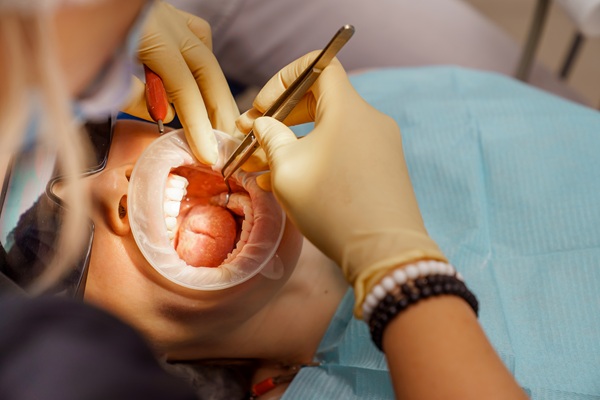The Difference Between Simple and Surgical Tooth Extraction
While preserving natural teeth is always recommended, are sometimes necessary to restore and preserve oral health. Depending on the complexity of the case, a general dentist or oral surgeon may recommend either a simple or surgical extraction. Understanding the differences between these two approaches can provide clarity and peace of mind when preparing for a procedure.
When do you need a tooth extraction?
Dental providers perform tooth extractions when a tooth becomes too compromised to be saved or when leaving it in place causes further complications. For example, severe decay that reaches deep into the tooth structure can lead to persistent pain and infection, making extraction the most effective solution when a filling or root canal is no longer viable. Similarly, gum disease can loosen the teeth by weakening the supporting gum tissue and jawbone; therefore, the provider may need to extract such teeth as part of the patient's gum disease treatment.
One of the most common types of tooth extraction dental providers perform is on impacted wisdom teeth. Impaction means that a tooth does not have enough room to erupt above the gumline properly. This condition can lead to pain, swelling, and potential damage to adjacent teeth, often necessitating extraction.
Other reasons for tooth extraction include significant trauma, fractures, or non-healing infections that render a tooth beyond repair. A thorough examination from a dental provider can reveal whether extraction is necessary and, if so, what treatment option best supports long-term oral health and function.
Types of tooth extraction: Simple vs. surgical extractions
Tooth extractions are classified as either simple or surgical, depending on the complexity of the procedure. Simple extractions are for visible teeth that are relatively intact and allow the provider to remove them without making incisions in the gum tissue. A general dentist typically carries out the procedure using local anesthesia, loosening the tooth before carefully pulling it. Recovery is usually quick and involves minimal discomfort. This approach is commonly used for mildly decayed teeth, baby (primary) teeth that have not fallen out naturally, or teeth removed for orthodontic treatment.
Surgical extractions are more complex, as they are necessary when a tooth is broken at the gum line or impacted beneath the surface. They are often needed for impacted wisdom teeth, severely broken teeth, or cases with extensive root damage that the provider cannot restore. An oral surgeon or dentist with advanced training performs the procedure, using pain management techniques for patient comfort. They will make incisions into the gums to access the tooth, which they may section into smaller pieces for easier removal. Recovery can take several weeks, although the patient should be able to return to work or school within 48 to 72 hours.
Which option is right for you?
A simple extraction is often sufficient for cases where the tooth is fully visible and intact. However, a surgical approach may be necessary when a tooth is broken, impacted, or embedded deep in the jaw. Factors such as pain tolerance, the presence of infections, and existing dental conditions also influence the decision. A dental provider can offer a personalized recommendation based on a patient's specific needs and dental health history.
Get more info in a consultation
Both simple and surgical tooth extractions can help restore oral health. Consulting with a general dentist or oral surgeon allows for a detailed assessment and a discussion of your treatment options. Contact Quasha Dentistry to schedule your consultation today.
Request an appointment here: https://gardensdentist.com or call Quasha Dentistry at (561) 220-0225 for an appointment in our Palm Beach Gardens office.
Check out what others are saying about our dental services on Yelp: .
Related Posts
Emergency dentistry deals with dental emergencies that require immediate treatment. For example, an infected tooth requires urgent care since it causes excruciating pain, and the infection is always a risk of expanding to other parts of the body.Here are some fascinating facts everyone should know about emergency dentistry:The emergency dental care umbrella covers any dental…
A tooth abscess is an infection that begins in the mouth and can spread to other body regions. Gum disease and tooth decay are often the outsets of a spot. A tooth abscess is much more likely in those with poor oral hygiene habits. Anyone experiencing the condition should visit the emergency dentistry office as…
Seeking emergency dentistry treatments can help you get relief. It can also help you regain your normal dental functions and self-esteem. The dentist can share dental care tips that you may not know or have forgotten about. If you want to know more about the dental advice that emergency dentistry can provide, here are the…
Emergency dentistry treatments can treat your cracked tooth. This type of dental damage can be painful and often debilitating, especially if the crack reaches the deeper parts of the tooth. Treating this dental damage can stop the discomfort. If you want to find out how emergency dentistry can help your cracked tooth, here are the…
